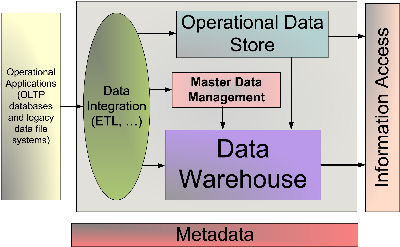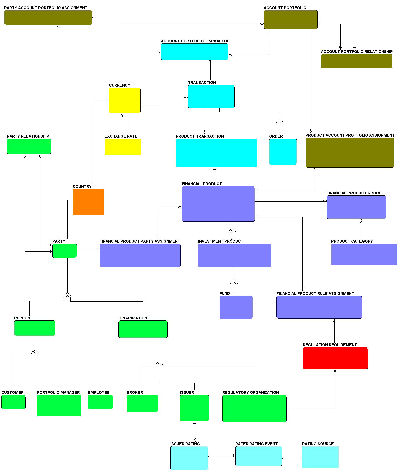In-Depth
Information Management: The Value of an Enterprise Data Model (Part 1 of 2)
We examine the steps your organization must take to develop an enterprise data model
By Mehdi Hatami
The management and delivery of information is a challenge every organization must face. Across every enterprise, information challenges are intensified by the presence of complex combinations of applications; heterogeneous rather than homogeneous technology environments are now the norm.
The life and scope of data is no longer limited to the individual application that first collects it. Instead, data has become crucial for any enterprise seeking to improve efficiency and cost reduction through self-knowledge. Increasingly, data is used for strategic and tactical decision-making, and, when managed properly, can be transformed into greater returns and mature business capabilities.
With proper and efficient data management in mind, information managers must focus on three important objectives: 1) improve the sharing and delivery of information across the corporation; 2) improve data quality (i.e., integration and consistency); and 3) build business intelligence (BI) applications to provide context and meaning.
Vital to achieving these three objectives is a thorough understanding of how data is defined and used across the enterprise -- an understanding that a common or enterprise view of information provides. This enterprise view is obtained through:
A strategic architectural framework
A clearly defined information model or enterprise data architecture
The implementation of metadata capabilities.
This article examines the first two components and their benefits. Enterprise data architecture provides a holistic view of data across an enterprise and yields analytic possibilities beyond those of a library or catalogue of data models for distinct applications or lines of business. Data quality and consistency more than compensate for their initial cost by ensuring that the wheel is not reinvented (nor valuable resources wasted) every time an analysis is desired by a particular subdivision of the enterprise.
As a lasting structure unique to the enterprise’s needs and procedures, an enterprise data architecture is the data soul of an organization: it grows and endures by facilitating data extraction by applications and by ensuring that any new data is efficiently absorbed and made available for future use.
Before an organization’s information management needs and requirements can be understood, a model must be developed that describes how information flows through, and is used by, the organization. Using an enterprise architecture model, the organization builds a repository of information models based on data elements (entities and attributes) that are subject-oriented, reusable, integrated, and accurate across the enterprise. These data-element models ultimately lead to improved data integration, information sharing, decision making, and application development. They can also be used as the foundation of an enterprise data warehouse and eventually used in a wide array of business intelligence solutions.
An organization’s evolution from a fragmented data environment to an architecture-oriented environment does not happen overnight; the process takes time and careful planning. The first step is the development of a solid enterprise architecture, which requires a well-planned framework and a rigorous methodology. An incremental approach is best:create a strategy for a gradual transition away from the existing fragmented, disparate legacy model to an enterprise data model that accurately represents existing information processes and provides for future needs.
When systems are built independently, separate sets of data models are created for each system. Many of these systems use common information categories such as organization, customer, location, and product. However, each system independently builds its own data definitions and its own information sources. The result of this fragmented approach is the increasingly challenging maintenance of accurate, up-to-date information because in each system, similar types of information are stored redundantly across many systems in different forms and structures.
An enterprise data system, on the other hand, is an interconnected system. Figure 1 (below) shows the whole spectrum of information management across an enterprise.
 Figure 1: Information Architecture Reference Diagram ("A common view of information") Click to enlarge |
Information management includes the systems and processes that manage and provide information required for all levels of activity within an organization or enterprise. In Figure 1, all of the systems that collect or provide data and processes are interconnected. Even when individual systems enter and alter information, the enterprise architecture ensures these processes work in concert rather than in isolation.
When an enterprise data architecture is in place, data needed by various components of the system -- customer information, for example -- can be shared without compromising accuracy or accessibility.
Different systems access and re-use data as a service, and departments do not need to spend valuable time updating their individual databases. When a customer is stored in a customer register, the enterprise data architecture ensures this same data is accessible to, and can be built upon, other systems such a account management or promotions. Figure 2 offers an example.
 Figure 2: Example of a data model: a conceptual or business view for a financial investment firm showing customer portfolio management for investments Click to enlarge |
An enterprise architecture is unique to each enterprise, and cannot be determined by a set of formulas. An in-depth understanding of corporate information requirements and processes is essential to distinguishing master data components (person, organization, geographical location, product, event, etc.) as well as to determining how these are managed across the enterprise. In addition, departmental or line of business (LOB)-specific components can be distinguished from shared components. If incorporated with a Data Warehouse, a consolidated and single version of truth becomes available, and significant business benefits ensue.
For years, data modeling has been standard practice in IT shops. Entity relationship models and, to a lesser extent, object models have been the two most commonly used forms, particularly after the introduction of client/server systems and the increased use of relational database management systems (RDBMS).
Almost every development methodology, architecture framework, and data modeling textbook recommends three levels of data models:
Conceptual
Logical
Physical
Together, these levels form a comprehensive view of the data structure across an enterprise. Historically, these three levels enabled the construction of various client/server ERP, CRM, and other applications reliant on a central database for data management. We’ll explore this idea, and examine the benefits and uses of an EDM, next week.
---
Mehdi Hatami is lead consultant at Adastra Corporation, a Toronto- and Prague-based international leader in business information management. You can contact the author at [email protected].